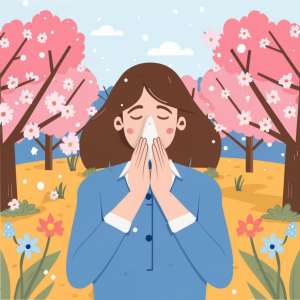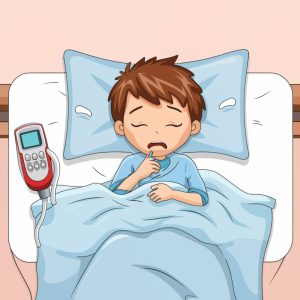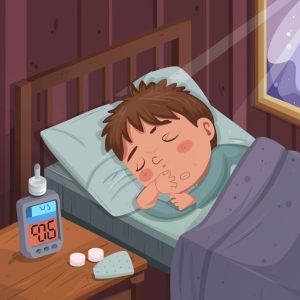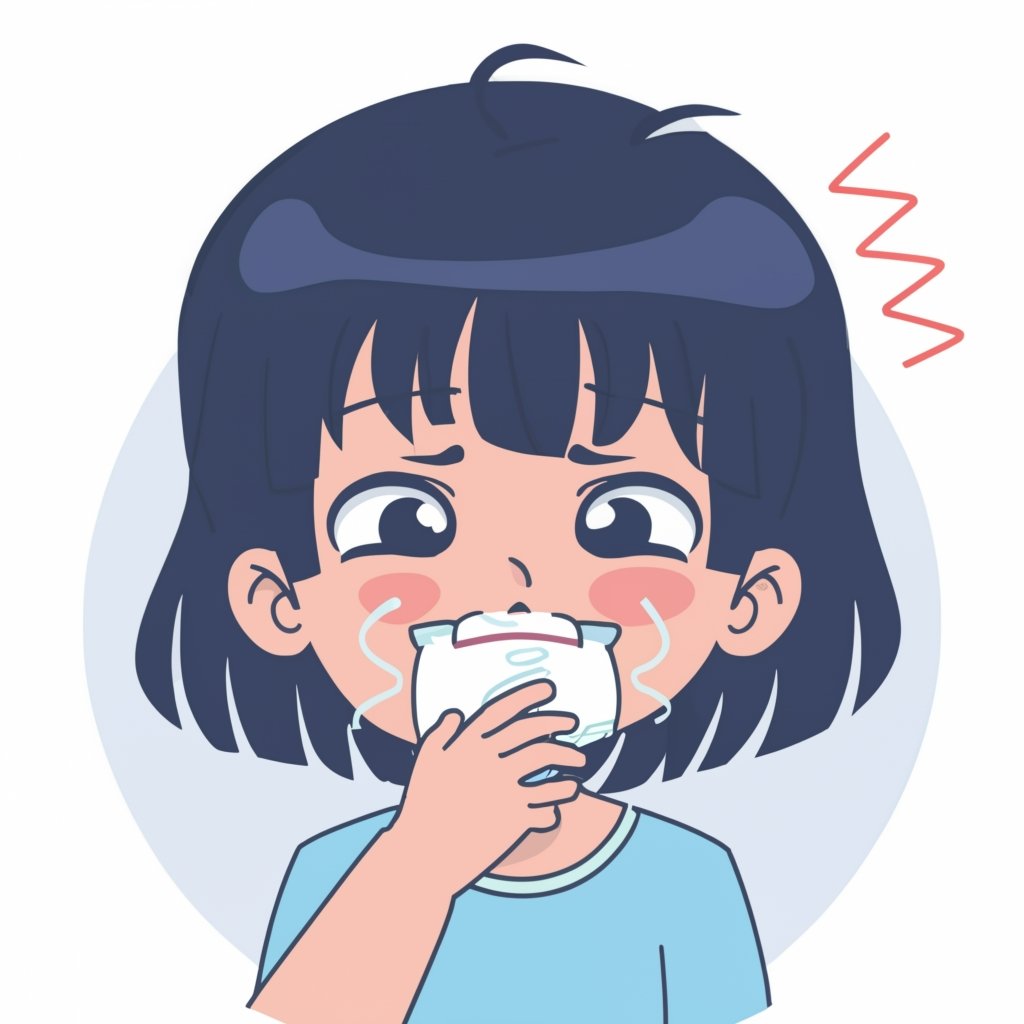Table of Contents
ToggleIntroduction
Determining whether a child is suffering from a sinus infection or common cold can be challenging for parents, who often face the task with a mix of concern and uncertainty.
These prevalent childhood ailments, while generally not severe, can significantly disrupt daily life and comfort.
Recognizing and understanding the differences between a sinus infection and a common cold is crucial, as it guides parents in providing the appropriate care and seeking timely medical attention.
This article aims to demystify these conditions, offering in-depth insights into their symptoms, causes, and management strategies.

Understanding Whether Your Child Has a Sinus Infection or Common Cold
Parents need to understand common childhood illnesses to provide appropriate care and seek timely medical attention for their children.
Familiarizing ourselves with these illnesses allows us to navigate their challenges effectively, ensuring we offer our children the best possible care and support during recovery.
Each year, sinus infections, which occur when bacteria or viruses inflame or infect the sinus cavities, affect a significant number of children.
Meanwhile, common colds, resulting from various viral strains, are highly prevalent in childhood and often present symptoms similar to those of sinus infections.
Understanding Sinus Infections and Common Colds
To effectively distinguish between sinus infections and common colds in children, parents must actively identify each condition’s unique characteristics.
Both conditions impact the upper respiratory system but differ significantly in their causes, symptoms, and severity.
Sinus infections, or sinusitis, arise when inflammation or infection occurs in the sinuses. Bacterial, viral, or fungal infections can trigger this inflammation.
In contrast, viral infections typically cause common colds, primarily affecting the nose and throat. Understanding these distinctions is vital for appropriate treatment and care.
For instance, sinus infections might require medical intervention, whereas common colds often resolve with home care and rest.
Early recognition of these conditions can prevent complications and ensure a quicker recovery for the child.

Definition and Causes of Sinus Infections
Sinusitis involves the inflammation or swelling of the sinuses, which are hollow spaces within the facial bones around the nose and eyes.
In a healthy state, these sinuses contain air; however, allergies or infections can block them, causing them to fill with fluid (mucus).
This fluid then becomes a breeding ground for bacteria or viruses.
In children, sinus infections commonly arise from viruses that cause colds or from allergies leading to nasal congestion.
Also, structural abnormalities in the nasal passages may increase the risk of developing chronic sinusitis in some children.
Definition and Causes of Common Colds
The common cold, primarily affecting the upper respiratory system, is a highly contagious viral infection caused by various strains of viruses, including rhinovirus, coronavirus, adenovirus, and respiratory syncytial virus (RSV).
These viruses spread through droplets released into the air when an infected person coughs or sneezes.
In children, the cold often starts with these viruses invading the nasal passages and replicating within the cells lining the respiratory tract.
This leads to the body’s immune response, causing inflammation and increased mucus production, resulting in symptoms like congestion, runny nose, and coughing.

Prevalence and Seasonal Patterns in Children
Sinus infections and common colds frequently affect children, with sinus infections more commonly occurring in older children than in infants.
Research indicates that about one in eight children will experience at least one episode of sinusitis by age seven. In contrast, common colds affect children even more widely.
Young children may experience up to eight colds per year, while adolescents typically catch around four colds annually.
Seasonal patterns also influence these illnesses, with common colds more prevalent during colder months due to increased indoor proximity, which facilitates easier virus spread.
For parents and caregivers, understanding the differences between sinus infections and common colds is essential for effective symptom management.
Recognizing each illness’s specific characteristics and causes enables caregivers to take appropriate actions, alleviating discomfort and expediting recovery for their children.
Symptoms of Sinus Infections in Children
Nasal Congestion and Discharge
Congestion and discharge primarily signal a sinus infection in children, requiring parents to closely observe the characteristics of the nasal discharge for clues about the infection’s severity and nature.
Mucus color variations, ranging from clear to yellow or green, often indicate the infection’s different stages or types.
Typically, clear mucus associates with a common cold, while yellow or green mucus points to a bacterial infection, a change is driven by an increase in white blood cells combating the infection.
Nasal blockage significantly impacts sinus infections.
The infection leads to inflammation in the sinuses, swelling, and narrowing of the sinus passages.
Consequently, children with nasal congestion may struggle to breathe through their noses, resorting to mouth breathing and experiencing disrupted sleep patterns, particularly if they are not used to breathing through their mouths.
Facial Pain or Pressure
Children with sinus infections commonly experience facial pain or pressure as a symptom.
The sinuses, when inflamed, create this discomfort by building up excessive pressure within their cavities.
This excessive pressure can lead to facial pain, often manifesting as a dull ache or throbbing sensation in areas like the forehead, cheeks, or between the eyes.
Diagnosing sinus infections in children becomes more accurate when identifying specific areas of pain or pressure.
For example, a child’s complaint of forehead pain or pressure, along with symptoms like nasal congestion and discharge, indicates an affected frontal sinus.
Similarly, pain around the cheeks points to an infection in the maxillary sinuses.
Headache, Fatigue, and Irritability
Sinus infections significantly impact a child’s overall well-being, extending beyond nasal symptoms and facial discomfort.
Children often complain of headaches due to increased pressure in their inflamed sinuses.
These headaches, typically dull or throbbing, become more pronounced when the child bends over or lies down.
Fatigue often accompanies sinus infections, as the body expends energy fighting off the infection, depleting reserves usually available for daily activities.
As a result, children may seem tired or lack their normal energy levels during this period.
The physical discomfort and disrupted sleep caused by nasal congestion and headaches can also make children irritable.
Parents need to recognize these symptoms, as children might not always express how they feel.
Observing behavioral changes, like increased fussiness or decreased interest in activities, is essential.
This observation helps parents provide appropriate support and seek medical attention when necessary.

Symptoms of Common Colds in Children
Runny or Stuffy Nose
In children experiencing a common cold, a runny or stuffy nose stands out as one of the most noticeable symptoms.
Inflammation and swelling of the blood vessels in the nasal passages cause this nasal congestion.
The body’s immune response to the viral infection ramps up mucus production, leading to a runny nose.
Initially, the cold produces a clear discharge, rich in water and antibodies that combat the virus.
However, as the immune system wages its ongoing battle, the discharge often thickens and turns yellow or greenish, signaling the buildup of dead white blood cells and bacteria.
Sneezing, Coughing, Sore Throat
Children frequently experience sneezing, coughing, and sore throats during a cold.
Excessive mucus production in the nasal passages often triggers sneezing, a reflexive response to expel irritants from the respiratory system.
Similarly, coughing actively clears excess mucus from the airways and throat, helping to remove phlegm caused by postnasal drip or viral infection-induced throat irritation.
Viruses attacking the upper respiratory tract tissues commonly cause sore throats during colds, leading to discomfort and pain while swallowing or speaking.
Managing these symptoms in children with common colds is crucial, and ensuring proper hydration can thin out mucus secretions effectively.
For soothing sore throat relief, encourage your child to gargle with a warm saltwater solution.
Also, over-the-counter remedies like saline nasal drops or sprays can alleviate nasal congestion, making breathing easier.
Low-Grade Fever
Children often experience a low-grade fever during a common cold, characterized by a body temperature slightly elevated above the normal range, usually less than 100.4°F (38°C).
The body naturally produces fevers in response to infections, using them to fight off pathogens and activate the immune system.
In common colds, the immune system typically triggers this low-grade fever to combat viral invaders.
Although these fevers are generally harmless and tend to resolve within a few days, parents should closely monitor their child’s condition.
To prevent dehydration, ensure your child drinks plenty of fluids and gets sufficient rest.
If necessary, parents can administer over-the-counter fever-reducing medications, adhering to the dosing guidelines provided by healthcare professionals.

A Word from HealthyVibe
Parents can better navigate the challenging period of a sinus infection or common cold in children by understanding the symptoms.
Runny or stuffy noses with clear or colored discharge signal nasal inflammation and mucus production.
Viral infections in the upper respiratory tract are the culprits behind sneezing, coughing, and sore throats.
Common colds also frequently lead to low-grade fevers, a natural part of the immune response.
Most cases of sinus infections or common colds resolve within a week without serious complications.
By applying these care measures and fostering a positive environment that focuses on the child’s well-being, parents can help expedite their child’s recovery from these brief yet uncomfortable episodes.
FAQ
1. How do sinus infections differ from common colds in children?
Sinus infections involve thick discharge and facial pain. Colds present with a runny nose and sneezing.
2. How can I identify if my child has a sinus infection or cold?
Observe symptom duration and type: sinusitis lasts longer with colored discharge.
3. When should I seek medical help for my child’s sinus symptoms?
Consult a doctor if symptoms persist over 10 days or worsen.
4. Can sinus infections in children be prevented?
Reduce virus exposure, manage allergies, and maintain good hygiene.
5. What are home remedies for children’s common cold symptoms?
Ensure rest and hydration; use saline nasal drops for congestion.









